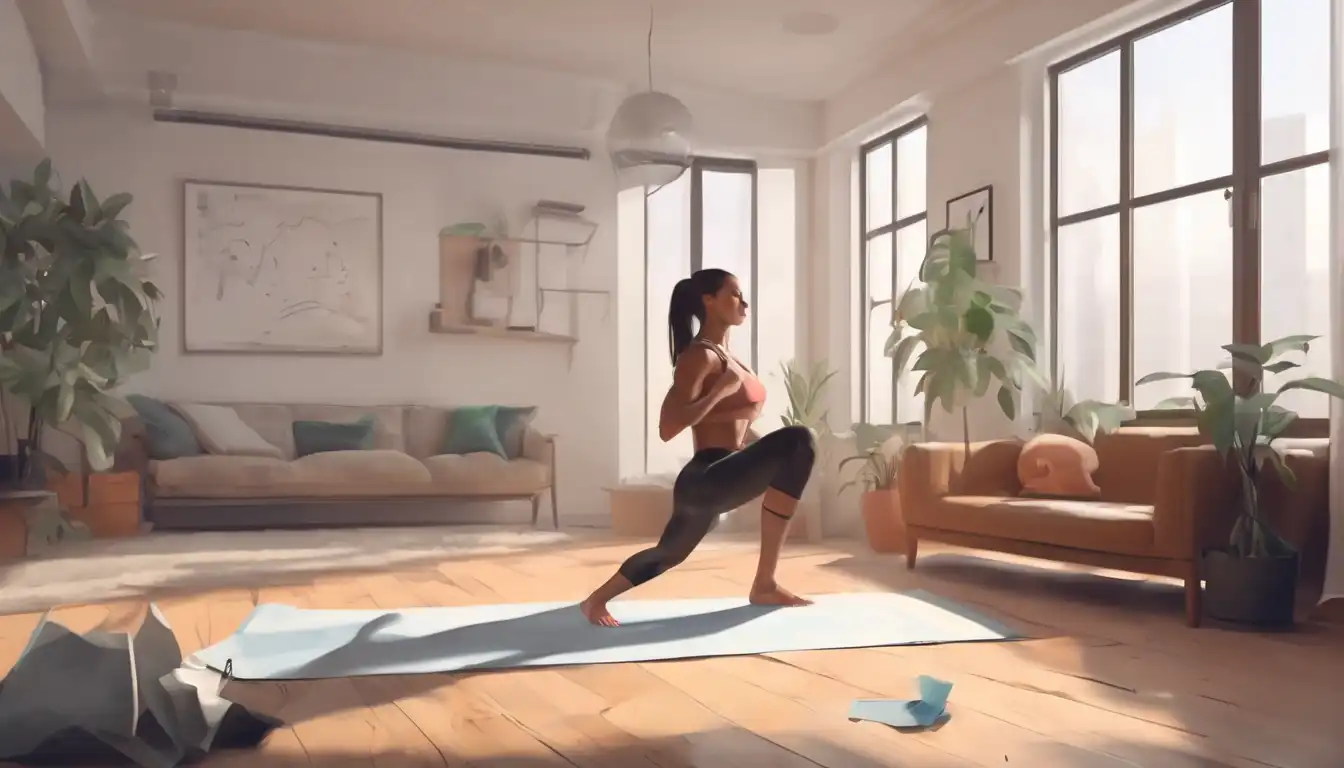Transform Your Fitness Journey with Zero Equipment
In today's fast-paced world, finding time to hit the gym can be challenging. However, effective home workouts with no equipment needed offer a practical solution for maintaining fitness without expensive memberships or complex gear. Bodyweight exercises provide a comprehensive approach to strength training, cardiovascular health, and flexibility that you can perform anywhere, anytime.
Why Choose No-Equipment Workouts?
No-equipment workouts eliminate common barriers to exercise, making fitness accessible to everyone. Whether you're traveling, working from home, or simply prefer exercising in private, these routines require minimal space and zero financial investment. Research shows that bodyweight training can be just as effective as traditional weight training for building strength and improving overall fitness.
The versatility of bodyweight exercises allows for endless variations and progressions. From beginners to advanced athletes, everyone can benefit from properly structured no-equipment routines. These workouts engage multiple muscle groups simultaneously, promoting functional strength that translates to real-world movements and activities.
Essential Bodyweight Exercises for Full-Body Conditioning
Upper Body Strength Builders
Push-ups remain the cornerstone of upper body training. Start with knee push-ups if you're new to exercise, gradually progressing to standard and advanced variations. For balanced development, include different hand positions to target chest, shoulders, and triceps from various angles.
Tricep dips using a sturdy chair or bench effectively work the back of your arms. Maintain proper form by keeping your shoulders away from your ears and controlling the movement throughout the entire range. Pair these with bodyweight rows under a table for complete upper body development.
Lower Body Power Moves
Squats form the foundation of lower body training. Focus on depth and form rather than speed, ensuring your knees track over your toes and your chest remains upright. Progress to single-leg variations like pistol squats as you build strength and stability.
Lunges in all directions—forward, reverse, and lateral—develop balanced leg strength and improve hip mobility. Incorporate jumping variations for cardiovascular benefits and power development. Don't forget calf raises for complete lower leg conditioning.
Core Strengthening Essentials
Planks challenge your entire core musculature. Hold standard planks for time, then experiment with side planks, reverse planks, and dynamic variations like plank shoulder taps. For more advanced core work, try hollow body holds and leg raises.
Bird-dogs and dead bugs improve core stability while promoting coordination between upper and lower body movements. These exercises are particularly valuable for preventing back pain and improving posture during daily activities.
Structuring Your No-Equipment Workout Routine
Beginner-Friendly Circuit
Start with this simple circuit: perform 10-15 repetitions of each exercise with minimal rest between movements. Complete 3-4 rounds with 60-90 seconds rest between circuits:
- Bodyweight squats
- Push-ups (modified if needed)
- Plank holds (20-30 seconds)
- Glute bridges
- Bird-dogs
Intermediate Strength Builder
For those with some exercise experience, try this more challenging routine. Perform each exercise for 30-45 seconds, rest 15 seconds, then move to the next. Complete 4-5 rounds:
- Jump squats
- Decline push-ups
- Walking lunges
- Side planks with hip dips
- Burpees
Advanced Metabolic Conditioning
Advanced exercisers can challenge themselves with this high-intensity circuit. Work for 40 seconds, rest 20 seconds between exercises. Complete 5-6 rounds:
- Plyometric lunges
- Diamond push-ups
- Mountain climbers
- Single-leg glute bridges
- Plank to push-up transitions
Maximizing Results with Proper Technique
Quality always trumps quantity in bodyweight training. Focus on maintaining perfect form throughout each repetition rather than rushing through movements. Proper breathing patterns—exhaling during the exertion phase—enhance performance and stability.
Progressive overload remains crucial even without equipment. Increase difficulty by adding repetitions, reducing rest periods, incorporating isometric holds, or trying more challenging exercise variations. Tracking your workouts helps maintain motivation and ensures continuous improvement.
Incorporating Flexibility and Recovery
No fitness routine is complete without addressing flexibility and recovery. Include dynamic stretching before workouts and static stretching afterward. Yoga poses like downward dog and warrior sequences complement bodyweight training beautifully.
Active recovery days might include light walking or mobility exercises to maintain joint health. Remember that muscles grow during rest periods, so adequate sleep and proper nutrition are essential components of your fitness journey.
Common Mistakes to Avoid
Many beginners make the error of progressing too quickly, leading to improper form and potential injury. Start with basic variations and master them before advancing. Another common mistake is neglecting certain muscle groups—ensure balanced programming that addresses all major movement patterns.
Poor workout consistency undermines results more than any other factor. Establish a regular schedule that fits your lifestyle, whether that's daily short sessions or longer workouts 3-4 times per week. Consistency, not perfection, drives long-term success.
Adapting Workouts for Limited Space
Even the smallest apartments can accommodate effective no-equipment workouts. Focus on exercises that require minimal horizontal space, such as stationary lunges, wall sits, and vertical movements. Creative use of walls for support opens additional exercise possibilities.
For those concerned about noise, choose exercises that minimize impact on floors and neighbors. Isometric holds and controlled movements provide excellent training benefits without the disturbance of jumping or pounding motions.
Tracking Progress and Staying Motivated
Documenting your fitness journey provides valuable feedback and motivation. Take progress photos monthly, record workout performance, and note how exercises feel easier over time. Celebrate small victories like completing an additional repetition or holding a plank longer.
Variety prevents boredom and plateaus. Regularly introduce new exercises or workout structures to keep your routine fresh and challenging. Consider following along with online workout programs for guided sessions and new ideas.
Conclusion: Your Fitness, Your Way
Effective home workouts with no equipment needed demonstrate that fantastic fitness results require nothing more than commitment and proper programming. These accessible exercises empower you to take control of your health regardless of circumstances or resources.
The convenience and flexibility of bodyweight training make consistency achievable for even the busiest individuals. Start where you are, progress at your own pace, and discover the incredible potential of training with just your body weight. Your fitness transformation begins with that first push-up, squat, or plank—no gym required.
